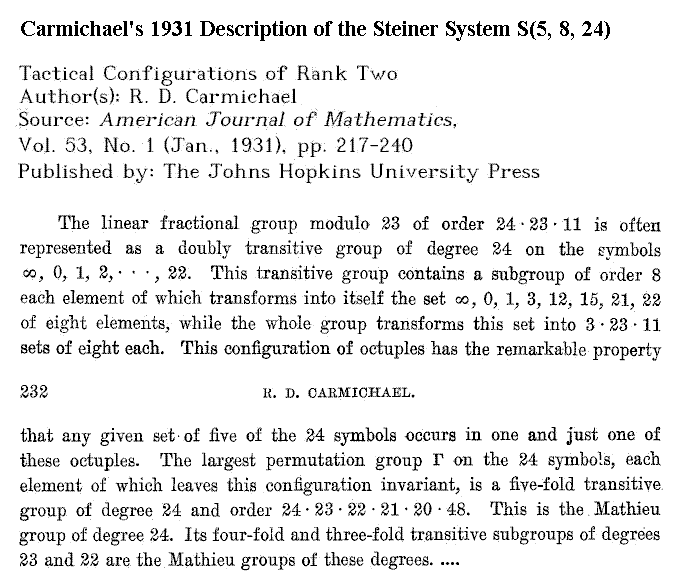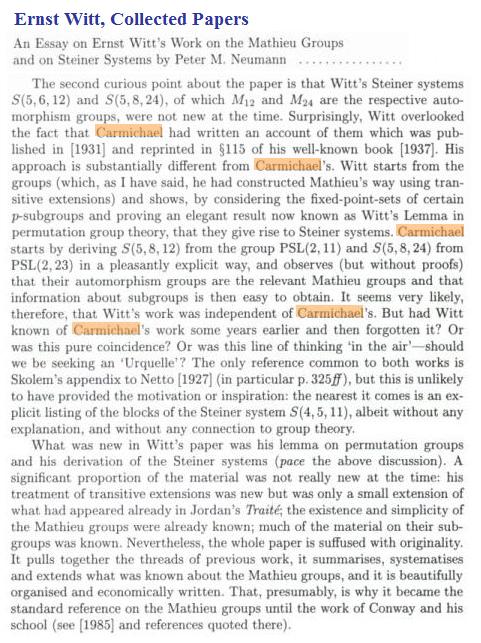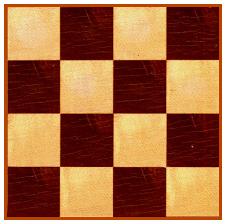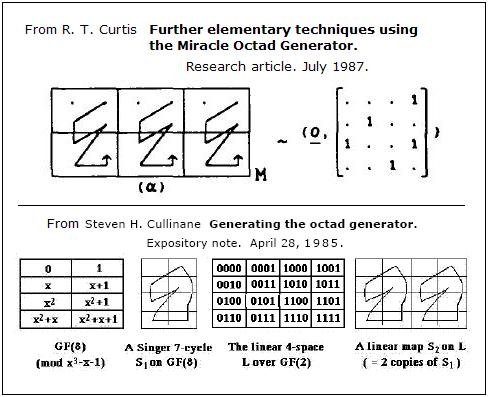The Miracle Octad Generator
(MOG) of R T. Curtis
The Steiner system S(5, 8, 24) is a set S of 759 eight-element subsets ("octads") of a twenty-four-element set T such that any five-element subset of T is contained in exactly one of the 759 octads. Its automorphism group is the large Mathieu group M24.
Robert A. Wilson on R. T. Curtis:
"One of his most important contributions is surely the invention of the MOG (Miracle Octad Generator) for facilitating calculation in the Mathieu group M24. Before then, if you wanted to generate octads, you had to look up the list of all 759 of them in a paper of Todd. Afterwards, all the octads were drawn on a postcard (not quite a postage-stamp!) and calculation became immeasurably easier. The MOG was an essential ingredient in the constructions of J4 and the Monster, and remains an indispensable tool for working in many of the sporadic groups."
-- "248 and All That," talk at the R. T. Curtis 60th birthday conference, Sept. 21, 2007

Shown above is a rearranged version of the
Miracle Octad Generator (MOG) of R. T. Curtis
("A new combinatorial approach to M24,"
Math. Proc. Camb. Phil. Soc., 79 (1976), 25-42.)




